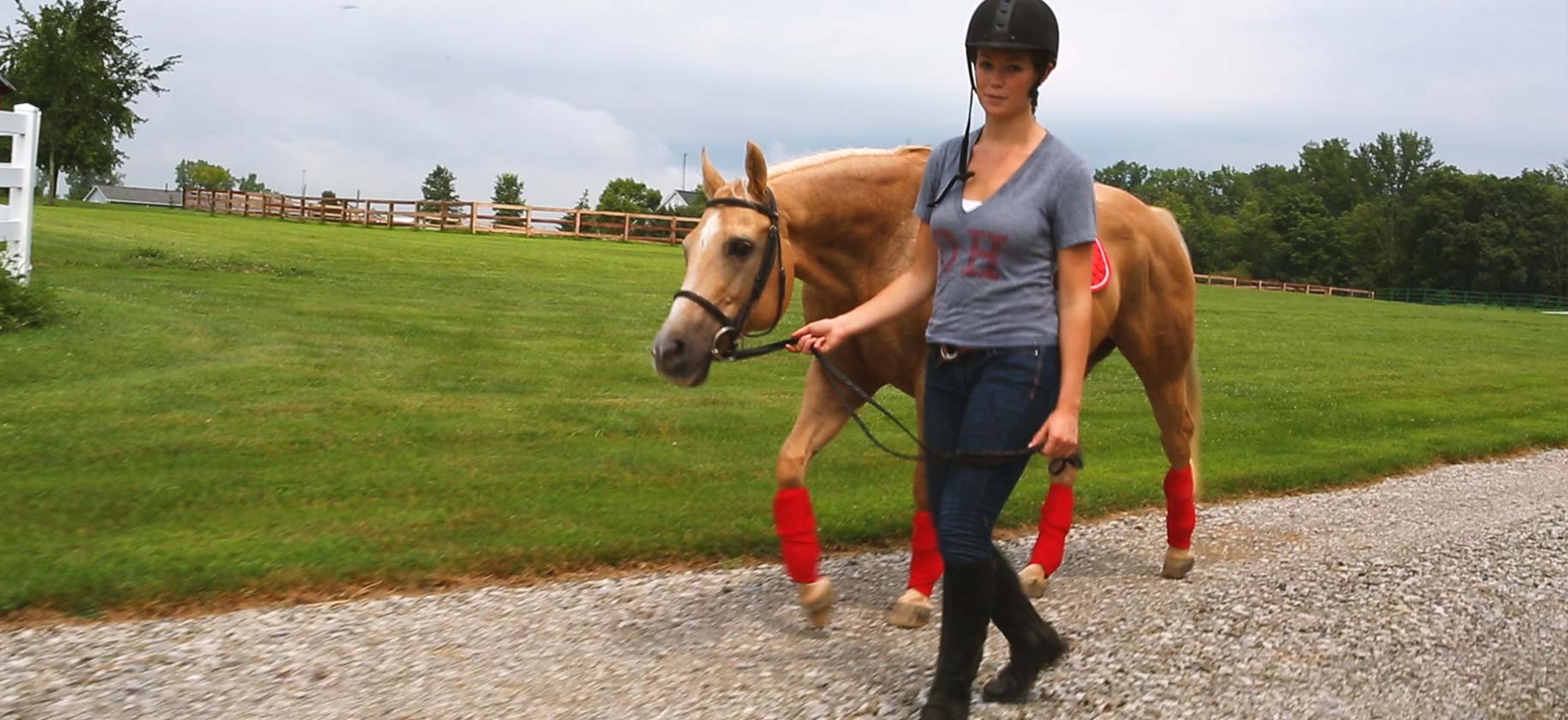Getting back in the saddle after neurologic trauma takes equal parts rehabilitation and perseverance
 The arena was brightly lit as her horse walked across the ring. His rider, then-18-year-old Regan Olvey, had prepared her tack correctly. The bridle and reins and the saddle were all in place, as was her helmet. None of that prevented what happened next.
The arena was brightly lit as her horse walked across the ring. His rider, then-18-year-old Regan Olvey, had prepared her tack correctly. The bridle and reins and the saddle were all in place, as was her helmet. None of that prevented what happened next.
Regan's brain slammed inside her skull as her head violently struck the arena floor. Her horse had simply stumbled, and its rapid fall was the last thing the recent high school graduate remembered before fully awakening and beginning to recall memories – in a hospital bed at Dodd Hall Rehabilitation Hospital, a component of the Neurological Institute within The Ohio State University Wexner Medical Center.
"For the first 48 hours I was unresponsive in an ICU in a Toronto hospital because my traumatic brain injury happened on my grandparents' farm in Canada," recalls Regan, whose parents transferred her by ambulance to Ohio State, where she spent the next four weeks in intensive, 24/7 rehabilitation therapy.
Paralyzed on her left side, Regan underwent physical, occupational and speech therapy, which continued on an outpatient basis for the next nine months. Ohio State therapists, rehabilitation psychologists and physicians all point to Regan's determined spirit as an essential element in her full recovery.
"Exercise is medicine," says W. Jerry Mysiw, MD, who oversaw the Physical Medicine and Rehabilitation team caring for Regan. "Therapeutic rehabilitation exercise allows a patient's brain to recover neurologic function lost to injury or disease. Regan challenged herself and today is a walking, fully functional college graduate."
"I wouldn't be where I am now without Ohio State. If it hadn't been for their great care, I don't know that I would have been able to start college that spring and enjoy life like I do today," she says.

